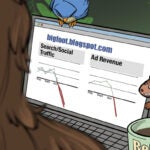Rubicon Project posted another quarter of significant declines as new CEO Michael Barrett attempts to turn around the business.
Revenue declined 34% YoY to $46 million in the first quarter. Advertising spend declined 23%, to $191.5 million. Though the revenue slightly beat expectations, the stock slid a few percentage points in after-hours trading.
Take rates declined .4% quarter over quarter, landing at 23.7%. Barrett told investors to expect “continuing, significant take rate declines.”
He gave three reasons for the Q1 declines.
First, Rubicon charges lower take rates when publishers bring demand through header bidding. Second, it charges lower take rates for its private marketplaces.
Third, a “competitive marketplace dynamic” is driving down take rates. As AdExchanger has reported, header bidding has allowed DSPs to pick and choose exchanges, often settling on the one with the lowest fees.
“We see mature marketplaces operating in the 15% to 20% range,” Barrett said. “Without giving specific guidance, we think that’s where it will net out.”
One of Rubicon’s publisher clients, The Guardian, filed a lawsuit against the platform in March, saying it charged hidden fees.
Barrett went on a listening tour this quarter with clients, in part to develop a new product strategy.
Customers said they still respected Rubicon’s name and reputation, but that it had been slow to respond to market changes – like header bidding – and “organizational turnover left them with uncertainty about our future,” Barrett said.
Though late to header bidding, Rubicon wants to be early to server-to-server header bidding, Barrett said. (Most of its competitors have already announced server-to-server header bidding products, though many publishers are still in a beta stage with the technologies.)
“Server-to-server isn’t just more elegant, it’s a way for us to play a leadership role, vs. the laggard role,” Barrett said.
Rubicon plans hopes to lead in server-to-server connections in a mobile app environment. Though not mentioned on the earnings call, the company first rolled out a mobile app header bidding product in December 2015. Those familiar with the technology later told AdExchanger the early attempt was clunky and slow, in part because it required an inefficient number of ad calls.
Finally, Rubicon sees an area of opportunity with its guaranteed audience product.
Google is the furthest along with a guaranteed audiences product and has the benefit of its DoubleClick for Publishers ad server, which makes it easier to predict what audiences will visit a publisher’s site. But Google isn’t very popular among buyers at the moment.
Barrett said guaranteed audiences were an area of “high desire, low scale and low effectiveness for buyers. We’re working with them to scale that up.”
As for returning to revenue growth? Barrett set a prediction: 2018.















